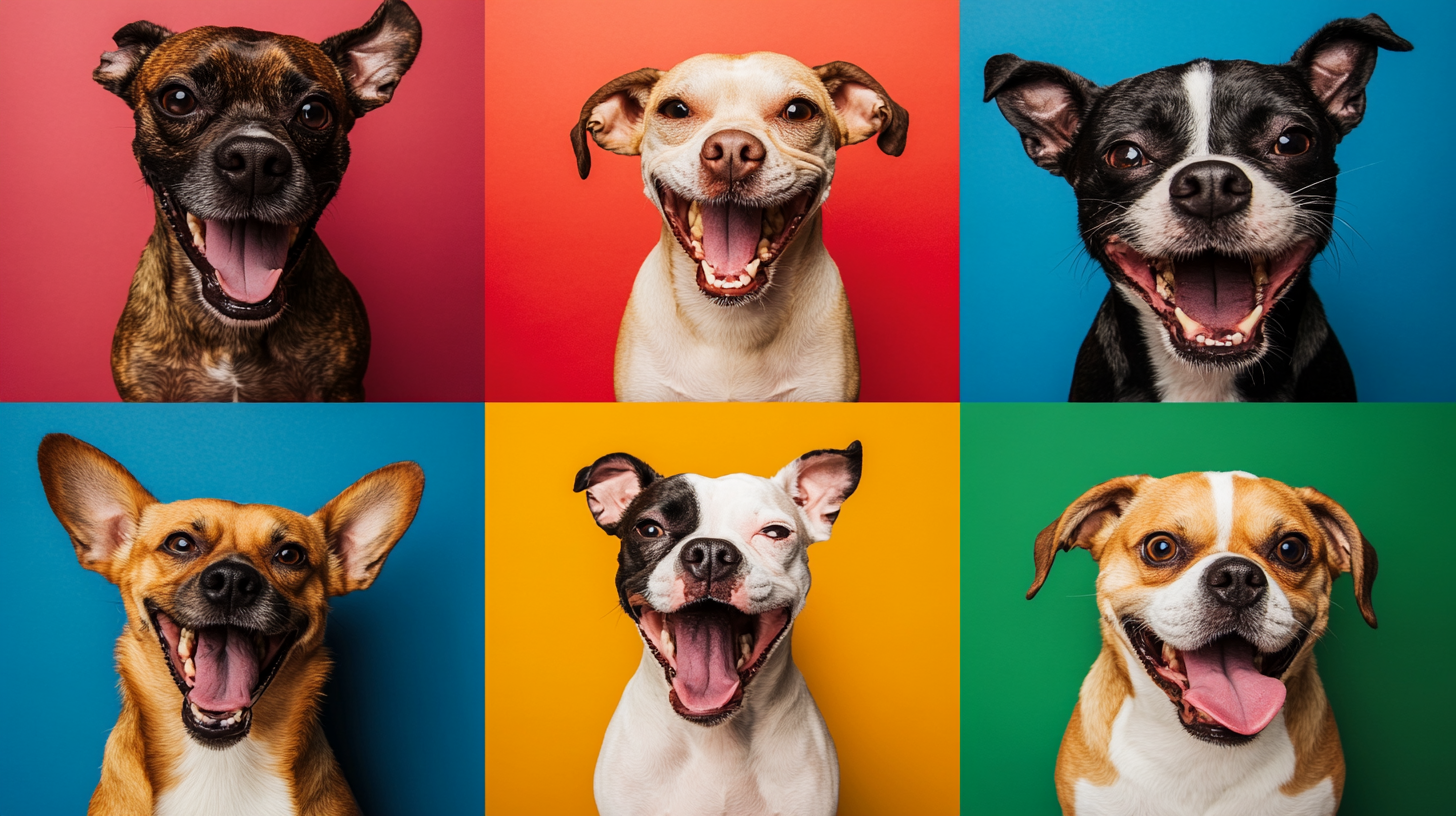Dogs have been our companions for thousands of years, evolving alongside us in a unique interspecies bond.
While they can’t speak our language, dogs have developed an impressive array of facial expressions to communicate with us.
Understanding these subtle cues can deepen your connection with your furry friend and help you better meet their needs.
Let’s explore the fascinating world of canine facial expressions and learn how to interpret them.
The Eyes: Windows to Your Dog’s Soul
Your dog’s eyes can convey a wealth of information about their emotional state.
The Power of Eye Contact
Direct eye contact from your dog often indicates attention and affection.
However, prolonged staring can be a sign of challenge or discomfort, especially between unfamiliar dogs.
The “Puppy Dog Eyes”
That heart-melting look with raised eyebrows and big, round eyes isn’t just cute – it’s a deliberate communication tactic.
Research suggests dogs have evolved this expression specifically to bond with humans.
Whale Eye
When you can see the whites of your dog’s eyes (often called “whale eye”), it may indicate stress or anxiety.
This is especially true if it’s accompanied by a tense body posture.

The Mouth: More Than Just Smiles
A dog’s mouth can express a range of emotions, from joy to stress.
The Relaxed, Open Mouth
A slightly open mouth with a relaxed jaw often indicates a content and happy dog.
This expression is sometimes accompanied by a lolling tongue, especially after exercise.
The Tight-Lipped Look
A closed mouth with tight lips can be a sign of stress or discomfort.
Pay attention to this expression, especially in unfamiliar situations.
The Submissive Grin
Some dogs display a “submissive grin” – a unique expression that looks like a nervous smile.
This is often a sign of appeasement and should not be confused with aggression.
Ears: The Emotional Antennas
A dog’s ears are highly expressive and can quickly change position to reflect their mood.
Alert and Attentive
Ears perked up and forward indicate your dog is alert and interested in something.
This could be a sound, sight, or even an anticipated command from you.
Relaxed and Content
Ears in a neutral position, neither erect nor flattened, often signify a relaxed and comfortable dog.
Fearful or Submissive
Ears flattened against the head can indicate fear, submission, or sometimes pain.
Context is key in interpreting this expression.
Forehead and Brows: Subtle Indicators
The muscles around a dog’s forehead and eyebrows can convey nuanced emotions.
The Furrowed Brow
A wrinkled or furrowed brow often indicates concentration or confusion.
You might see this when your dog is trying to understand a new command or situation.
Raised Eyebrows
Slight raising of the eyebrows, especially when combined with eye contact, can be a sign of recognition or greeting.
This is often accompanied by a softening of the overall facial expression.
Putting It All Together: Reading the Whole Face
While individual features are important, it’s crucial to look at your dog’s entire facial expression.
The Happy Face
A truly happy dog often displays a combination of relaxed ears, soft eyes, and a slightly open mouth.
The overall expression should appear soft and inviting.
The Anxious Face
An anxious dog might show whale eyes, flattened ears, and a tight mouth.
The overall expression may appear tense or worried.
The Playful Face
A playful expression often involves bright, alert eyes, a relaxed open mouth (sometimes appearing to “smile”), and forward-facing ears.
This is often accompanied by an excited body posture, ready for action.
The Importance of Context
Remember that facial expressions should always be interpreted in context with body language and the current situation.
Environmental Factors
Consider what’s happening around your dog when interpreting their expressions.
Are there new people, animals, or situations that might be influencing their mood?
Individual Differences
Just like humans, dogs have individual personalities and may express themselves uniquely.
Get to know your dog’s particular way of emoting for the most accurate interpretations.
Enhancing Your Bond Through Understanding
Learning to read your dog’s facial expressions can significantly improve your relationship.
Responding to Emotions
By recognizing your dog’s emotional state, you can respond appropriately to their needs.
This can help build trust and strengthen your bond.
Early Problem Detection
Recognizing subtle changes in your dog’s expressions can help you identify potential health or behavioral issues early.
Conclusion: The Language of Canine Faces
Mastering the art of reading your dog’s facial expressions opens up a new world of communication between you and your furry companion.
It’s a skill that deepens your understanding of their emotional world and strengthens the unique bond you share.
Remember, every dog is an individual with their own way of expressing themselves.
The more time you spend observing and interacting with your dog, the better you’ll become at interpreting their unique facial language.
This enhanced understanding can lead to a more fulfilling relationship, better care for your dog’s emotional needs, and even early detection of potential health issues.
So, the next time you look at your dog, take a moment to really observe their facial expressions.
You might be surprised at just how much they’re telling you with a simple look.
By learning this silent language, you’re not just becoming a better dog owner – you’re becoming a better friend to your loyal companion.
SHARE now with your friends!
- Hero Farm Dog Survives Epic Battle with Coyote Pack - December 9, 2024
- The 10-Minute Bedtime Routine That Changed My Dog’s Sleep Forever - November 29, 2024
- Creating a Safe Space for Nervous Pets: Your Guide to Pet-Friendly Havens - November 25, 2024

